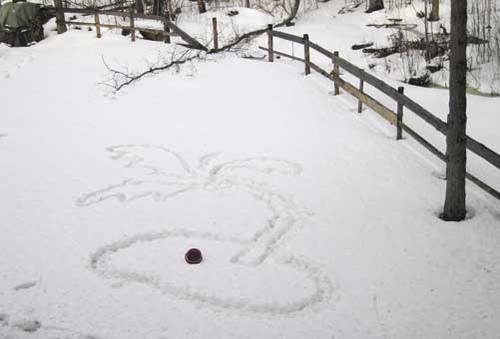Amalia Pica
25 Nov 2006 - 13 Jan 2007
AMALIA PICA
"Playstation" - Si no estаs tu
The air of summer evoked by a South American bar such as those familiar in Europe, with brightly-coloured lamps on a wanton streamer dangling in front of the door or draped around the terrace, entices unsuspecting passers-by into Galerie Fons Welters. The Argentinean artist Amalia Pica (Neuquйn,1978) is well aware of the symbols associated with the European 'South American feeling'.
Once inside, visitors are disconcerted by the failure to fulfil the promise made outside. From the ceiling hangs the rest of the streamer, but it is colourless, as a preliminary draft of what is outside. And although the Playstation floor is covered with a variety of beer-mats - the signs of a bar, but less sensual than expected, more the standard Dutch kind - there is nothing to drink. The mats are arranged in wonderful patterns, like a mosaic in a palace or a mosque. On the wall is a framed place-mat with a picture by Pieter Breughel that is often found in pancake houses, with the remains of a meal. The foreshadowed gathering is over; or is it still to come?
A small slide-show in a corner of the Playstation space depicts a boy walking over the snow. One step at a time, with the aid of a bucket, he is sculpting a figure. The last slide projects the image of a tropical island shaped in the snow; the bucket has become a coconut. The desire for precisely what is absent comes into focus: a nostalgia for the future.
On the wall hang sheets of paper covered with groups of two or more overlapping coloured circles - known in mathematics as Venn diagrams. These diagrams can be used to visualise the characteristics of different groups or communities; the overlaps reflect features that they have in common. A Venn diagram is an abstract image, one of many models used to clarify the dynamics and relationships between groups. The circles have enormous appeal - the yearning to belong to a community lies within us all. But they also repel, arousing fear and a sense of oppression. Belonging to a community can have a blinding effect - circles can only be seen as such from the outside.
Faintly audible within the exhibition space, as from a great distance, visitors hear the festive strains of a song: 'Si no estаs tu' (When you are not here). When you are not here / only your remains are visible. / When you are not here / I am incomplete. / When you are not here / I am alone and long for when you were here or for your return. / When you are not here, it means: / I, I am here.
[Laura van Grinsven]
"Playstation" - Si no estаs tu
The air of summer evoked by a South American bar such as those familiar in Europe, with brightly-coloured lamps on a wanton streamer dangling in front of the door or draped around the terrace, entices unsuspecting passers-by into Galerie Fons Welters. The Argentinean artist Amalia Pica (Neuquйn,1978) is well aware of the symbols associated with the European 'South American feeling'.
Once inside, visitors are disconcerted by the failure to fulfil the promise made outside. From the ceiling hangs the rest of the streamer, but it is colourless, as a preliminary draft of what is outside. And although the Playstation floor is covered with a variety of beer-mats - the signs of a bar, but less sensual than expected, more the standard Dutch kind - there is nothing to drink. The mats are arranged in wonderful patterns, like a mosaic in a palace or a mosque. On the wall is a framed place-mat with a picture by Pieter Breughel that is often found in pancake houses, with the remains of a meal. The foreshadowed gathering is over; or is it still to come?
A small slide-show in a corner of the Playstation space depicts a boy walking over the snow. One step at a time, with the aid of a bucket, he is sculpting a figure. The last slide projects the image of a tropical island shaped in the snow; the bucket has become a coconut. The desire for precisely what is absent comes into focus: a nostalgia for the future.
On the wall hang sheets of paper covered with groups of two or more overlapping coloured circles - known in mathematics as Venn diagrams. These diagrams can be used to visualise the characteristics of different groups or communities; the overlaps reflect features that they have in common. A Venn diagram is an abstract image, one of many models used to clarify the dynamics and relationships between groups. The circles have enormous appeal - the yearning to belong to a community lies within us all. But they also repel, arousing fear and a sense of oppression. Belonging to a community can have a blinding effect - circles can only be seen as such from the outside.
Faintly audible within the exhibition space, as from a great distance, visitors hear the festive strains of a song: 'Si no estаs tu' (When you are not here). When you are not here / only your remains are visible. / When you are not here / I am incomplete. / When you are not here / I am alone and long for when you were here or for your return. / When you are not here, it means: / I, I am here.
[Laura van Grinsven]

